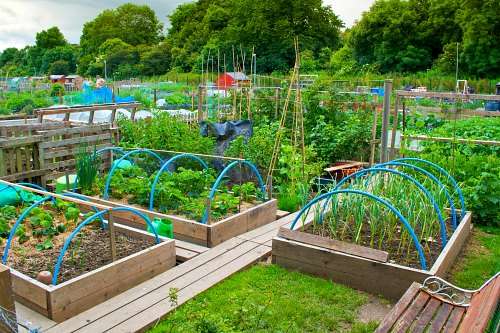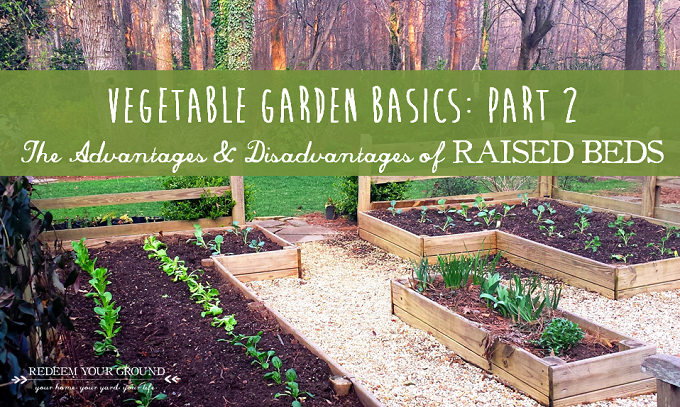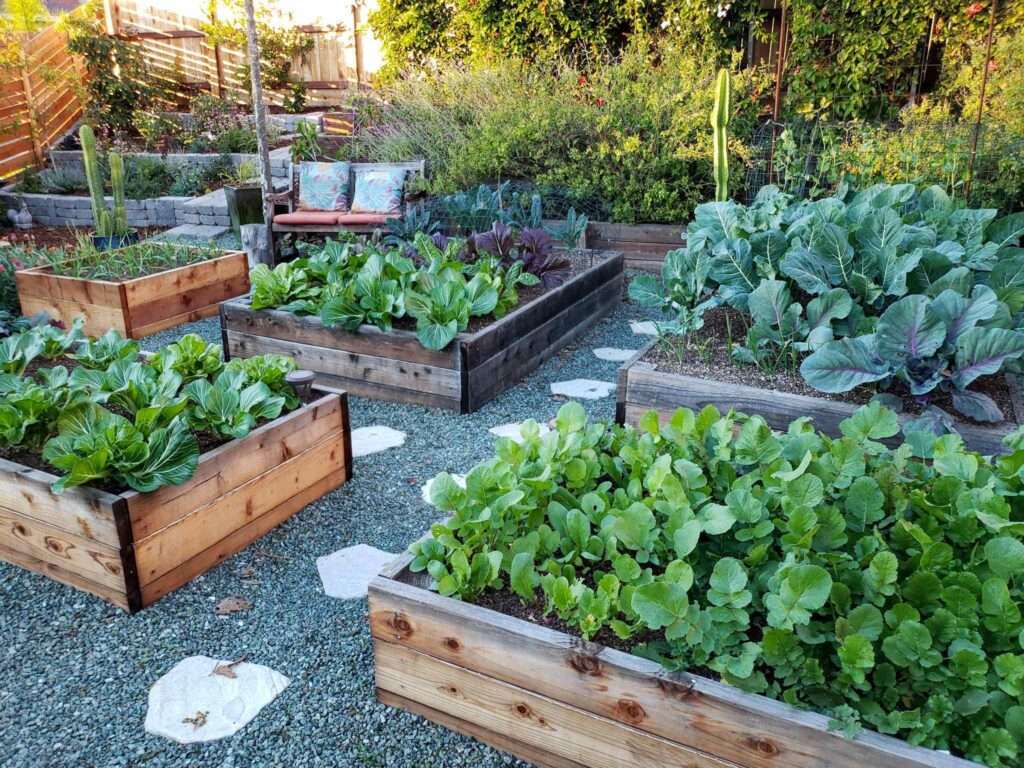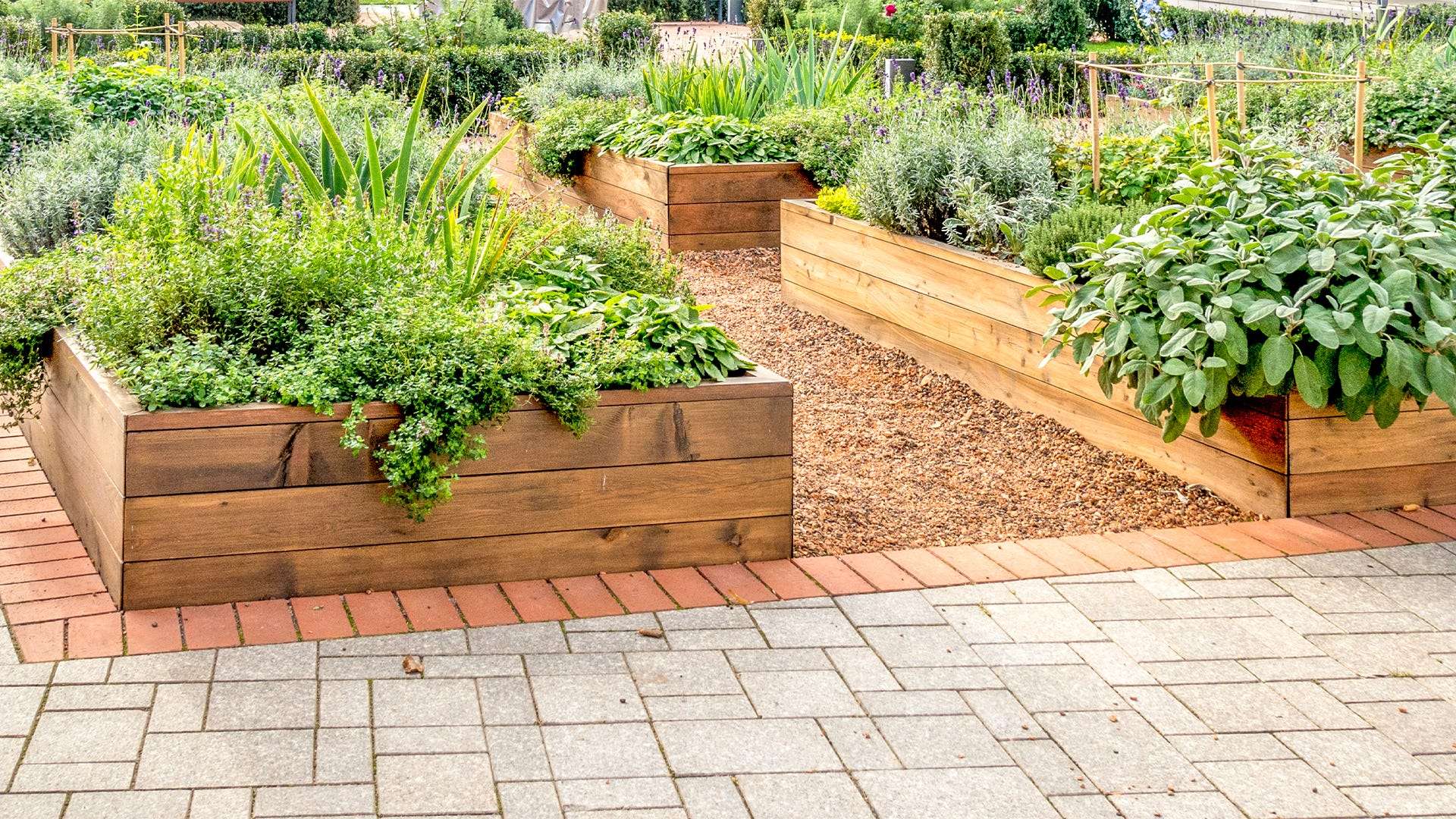In this article, we’ll be discussing the pros and cons of raised bed gardening. If you’re interested in off grid living or gardening, then this is the perfect topic for you. We’ll explore the advantages of raised bed gardening, such as better soil quality and easier maintenance, as well as the potential downsides, like the need for frequent watering and the initial cost. By the end of this article, you’ll have a clear understanding of whether raised bed gardening is the right choice for you.

The Pros and Cons of Raised Bed Gardening
If you are an avid gardener or someone who wants to start their own garden, you may have come across the concept of raised bed gardening. Raised bed gardening has gained popularity in recent years due to its numerous benefits. In this article, we will explore the pros and cons of raised bed gardening, helping you determine if it is the right choice for your garden.
Benefits of Raised Bed Gardening
Improved Soil Drainage
One of the major advantages of raised bed gardening is improved soil drainage. The elevated nature of raised beds allows excess water to drain more efficiently compared to traditional garden beds. This prevents waterlogging and ensures that plant roots do not sit in water, reducing the risk of root rot and other water-related diseases. Proper soil drainage promotes healthier plant growth and prevents water-related issues.
Better Weed Control
Weeds can be a nuisance in any garden, but raised bed gardening offers better weed control. By creating a defined planting area above ground level, raised beds make it easier to remove weeds and prevent them from encroaching on your plants. The raised bed design also restricts the spread of weeds from the surrounding areas, minimizing the effort required to keep your garden weed-free.
Enhanced Pest Control
Raised bed gardening can also improve pest control. By raising your plants off the ground, you create a physical barrier that deters many common garden pests, such as slugs, snails, and ground-dwelling insects. Additionally, the confined space of raised beds makes it easier to implement pest control measures, such as installing physical barriers or using organic pest control methods, protecting your plants from damage.
Easier Access and Maintenance
One of the main advantages of raised bed gardening is the ease of access and maintenance it offers. The raised bed design allows you to garden at a comfortable height, reducing strain on your back and knees. This makes it a great option for people with limited mobility or those who prefer not to bend or kneel while gardening. Additionally, the compact nature of raised beds makes it easier to reach all plants for planting, pruning, and harvesting, making garden maintenance a breeze.
Extended Growing Season
Raised bed gardening can extend your growing season, allowing you to start planting earlier in the spring and continue growing later into the fall. This is because the soil in raised beds warms up faster in the spring, providing a conducive environment for early-season crops. Additionally, raised beds can be covered with protective materials, such as row covers or cold frames, to extend the growing season even further. This means you can enjoy fresh vegetables for a longer period of time.
Increased Soil Quality
Amended Soil Composition
One of the significant advantages of raised bed gardening is the ability to control and amend the soil composition. With raised beds, you have the freedom to create the ideal soil mix, customized for the specific needs of your plants. By incorporating organic matter, such as compost or well-rotted manure, you can improve soil structure, nutrient content, and overall fertility. This ensures that your plants have access to the essential nutrients they need for healthy growth.
Optimal Soil Aeration
Raised beds provide optimal soil aeration, which is beneficial for plant roots. The loose and well-drained soil in raised beds allows air to easily reach the root zone, promoting healthy root development. Proper soil aeration enhances nutrient uptake and improves overall plant vigor. Additionally, the improved oxygen levels in the soil minimize the risk of root diseases that thrive in waterlogged conditions.
Enhanced Soil Fertility
By incorporating organic matter and soil amendments, raised bed gardening promotes enhanced soil fertility. The controlled environment of raised beds ensures that the soil remains rich in nutrients, providing a steady supply for your plants. This can result in healthier plant growth, increased yields, and better overall garden productivity.
Reduced Soil Erosion
Raised bed gardening helps reduce soil erosion compared to traditional gardening methods. The defined borders of raised beds prevent soil erosion by keeping the soil in place and protecting it from heavy rainfall or strong winds that can wash away topsoil. This conservation of topsoil is crucial for long-term gardening success, as topsoil is rich in nutrients and essential for plant growth.
Versatility and Mobility
Flexible Placement
Raised beds offer flexible placement options, allowing you to position them wherever suits your garden design or growing needs. Whether you have limited space in your backyard or want to create a striking visual display, raised beds can be arranged in various configurations to fit your preferences. You can have multiple raised beds in different shapes and sizes, creating an organized and visually appealing garden layout.
Portability and Adaptability
One of the advantages of raised bed gardening is the portability it offers. Raised beds can be constructed in removable or modular forms, making it possible to relocate them if needed. This is particularly beneficial for renters or individuals with temporary living arrangements. Additionally, the modular design allows for easy expansion or modification of the garden layout as your needs change.
Ideal for Small Spaces
Raised bed gardening is ideal for small spaces, proving that lack of room is no longer a barrier to growing your own plants. By utilizing vertical space, you can maximize your growing area. Raised beds can be built against a wall or fence, or even stacked on top of each other to create tiered gardens. This allows you to grow a wide variety of plants, from herbs and vegetables to flowers and even small fruit trees, even in the most limited spaces.

Improved Plant Health and Productivity
Reduced Soil Compaction
One of the advantages of raised bed gardening is the prevention of soil compaction. Traditional garden beds can become compacted over time due to regular foot traffic or heavy machinery. This compaction restricts root growth, inhibiting nutrient uptake and water absorption. In raised beds, the soil remains loose and well-aerated, reducing the risk of soil compaction and promoting healthier root development.
Improved Root Development
Raised bed gardening promotes improved root development. The loose and well-drained soil in raised beds allows roots to penetrate and spread more easily compared to compacted soil in traditional garden beds. This results in stronger and healthier root systems, which are crucial for optimal nutrient and water uptake. With enhanced root development, plants are better equipped to withstand environmental stresses and achieve higher productivity.
Optimal Water Retention
Raised bed gardening helps optimize water retention in the soil. The elevated nature of raised beds allows excess water to drain, preventing waterlogged conditions that can lead to root rot. At the same time, the organic matter and soil composition in raised beds help retain moisture, reducing water evaporation and ensuring a steady supply of water to plant roots. This efficient water management encourages healthy plant growth while conserving water resources.
Increased Nutrient Availability
One of the advantages of raised bed gardening is the increased availability of nutrients for plant growth. By amending the soil with organic matter and soil amendments, you can ensure that essential nutrients are readily available to your plants. The controlled environment of raised beds minimizes nutrient leaching, ensuring that valuable nutrients are retained in the root zone, where plants can access them. This leads to improved plant health, increased yields, and more nutritious crops.
Higher Crop Yields
Raised bed gardening can result in higher crop yields compared to traditional garden beds. The enhanced soil fertility, improved root development, and optimized growing conditions in raised beds contribute to increased plant productivity. With proper planning and care, raised beds can produce bountiful harvests of vegetables, fruits, and herbs, maximizing the use of limited garden space.
Accessibility and Ergonomics
Reduced Physical Strain
Raised bed gardening is a great option for reducing physical strain while gardening. The elevated height of raised beds eliminates the need for bending or kneeling, reducing stress on your back, knees, and joints. This makes gardening more comfortable and enjoyable, especially for individuals with physical limitations or those who have difficulty with traditional garden beds.
Ideal for People with Limited Mobility
Raised bed gardening is particularly beneficial for people with limited mobility. The ergonomic design of raised beds allows individuals who may have difficulty moving around or getting down to ground level to participate in gardening. Accessible raised beds can be customized with features such as wider paths, handrails, or elevated planters, making gardening accessible to individuals of all abilities.

Sustainability and Environmental Benefits
Water Conservation
Raised bed gardening promotes water conservation. By allowing excess water to drain efficiently, raised beds minimize water wastage and reduce the risk of overwatering. The enhanced soil structure and organic matter in raised beds also help retain moisture, reducing the frequency and volume of watering required. This sustainable water management approach helps conserve water resources while maintaining healthy plant growth.
Reduced Chemical Usage
Another advantage of raised bed gardening is the potential for reduced chemical usage. By creating a controlled environment and focusing on soil health, raised beds can naturally deter pests and diseases, minimizing the need for chemical pesticides or fungicides. Additionally, organic gardening practices can be easily implemented in raised beds, promoting natural pest control and ensuring a chemical-free environment for your plants.
Protection of Native Soil
Raised bed gardening helps protect the native soil in your garden. By containing the growing area within raised beds, you are preventing soil compaction and erosion, which can degrade the quality of your garden soil over time. With raised beds, you can maintain the integrity and fertility of your native soil while enjoying the benefits of improved soil structure and nutrient availability.
Potential Disadvantages of Raised Bed Gardening
While raised bed gardening has numerous advantages, it is essential to consider potential disadvantages to make an informed decision for your garden.
Higher Initial Cost
One of the potential drawbacks of raised bed gardening is the higher initial cost compared to traditional garden beds. Building or purchasing raised bed materials can be more expensive, especially if you opt for durable and long-lasting materials such as cedar or composite lumber. However, it is important to note that raised beds can be a long-term investment, offering many benefits over time.
Limited Planting Depth
Raised beds have a limited planting depth compared to traditional garden beds. The elevated nature of raised beds restricts the depth of soil available for plant roots to grow. This can be a disadvantage for certain plants with deep root systems or crops that require ample soil volume. However, with proper planning and plant selection, many plants can thrive in the limited soil depth of raised beds.
Regular Watering Requirements
Raised beds require regular watering due to their fast-draining nature. The improved soil drainage, while beneficial in many ways, can result in increased evaporation and water loss. This means that raised beds may require more frequent watering compared to traditional garden beds, particularly in hot and dry climates. However, proper mulching and irrigation techniques can help mitigate this issue.
Risk of Overheating
Raised beds, especially those made of dark-colored or heat-retaining materials, have a higher risk of overheating compared to traditional garden beds. The elevated position and confined space of raised beds can cause the soil temperature to rise significantly, potentially damaging sensitive plant roots or causing heat stress. It is important to monitor and regulate the soil temperature in raised beds, particularly during hot summer months.
Vulnerable to Certain Pests
While raised beds can offer enhanced pest control, they may be more vulnerable to certain pests compared to traditional garden beds. Some pests, such as slugs or snails, may find it easier to access the plants in raised beds. Additionally, certain pests, such as wireworms or cutworms, may still pose a threat to your plants even in raised beds. Proper pest management strategies, including physical barriers or organic pest control methods, can help mitigate this risk.
Potential Soil Imbalance
Another potential disadvantage of raised bed gardening is the risk of soil imbalance. Because raised beds rely on a specific soil mix, it is crucial to maintain the proper balance of nutrients and pH levels. Over time, the soil in raised beds may become depleted or imbalanced, requiring regular soil testing and amendment to ensure optimal plant growth. Regular monitoring and soil maintenance can address this issue effectively.

Lack of Soil Diversity
Reduced Biodiversity
Raised bed gardening may result in reduced biodiversity compared to traditional gardening methods. The controlled environment of raised beds limits the diversity of soil organisms, including beneficial bacteria, fungi, and insects. While these organisms play important roles in soil health and plant nutrition, their populations may be less diverse in raised beds. However, by incorporating organic matter and practicing sustainable gardening methods, you can still support beneficial soil organisms in your raised beds.
Decreased Soil Microorganisms
Similar to reduced biodiversity, raised beds may have fewer soil microorganisms compared to traditional garden beds. The enclosed nature of raised beds, together with the use of specific soil mixes, may limit the presence of diverse microorganisms, such as beneficial bacteria and mycorrhizal fungi. These microorganisms play critical roles in soil fertility and nutrient cycling. However, with proper soil management techniques, including the use of organic matter and compost, you can promote healthy soil microorganisms in your raised beds.
Limited Beneficial Soil Interactions
Raised beds restrict the interactions between plant roots and the larger soil ecosystem. In traditional garden beds, plant roots can extend and form beneficial relationships with nearby plants, exchanging nutrients and sharing resources. This natural cooperation may be limited in raised beds due to the confined planting area. However, by incorporating companion planting techniques and diversifying your plant selection, you can still encourage beneficial interactions within your raised beds.
Risk of Overwatering
Greater Potential for Waterlogging
While raised beds promote good soil drainage, there is still a risk of overwatering if not properly managed. If the soil in raised beds becomes compacted or the drainage system becomes blocked, excess water can collect and lead to waterlogged conditions. Overwatering can negatively impact plant health and result in root diseases. Regular monitoring of soil moisture levels and proper irrigation practices can help prevent overwatering and maintain a healthy root environment.
Increased Chance of Diseases
Raised beds, especially those with dense planting or limited air circulation, may increase the chance of certain diseases. The confined space of raised beds can create humidity and moisture levels suitable for disease development, particularly fungal diseases. Proper spacing between plants, good airflow, and timely removal of diseased plant material can help reduce the risk of diseases in raised bed gardens.

Maintenance and Upkeep
Regular Weeding
While raised bed gardening offers better weed control compared to traditional garden beds, regular weeding is still necessary. Weeds can still find their way into raised beds through wind dispersal or when soil amendments contain weed seeds. Regular weeding is essential to prevent weeds from competing with your plants for nutrients and resources. However, the defined boundaries of raised beds make the weeding process more manageable and less time-consuming.
Monitoring Soil Moisture
Raised beds require frequent monitoring of soil moisture levels. The fast-draining nature of raised beds means that the soil can dry out quickly, particularly during hot or windy weather. Regular monitoring and adjustment of watering schedules are necessary to ensure that plants receive adequate moisture. Utilizing mulch or installing drip irrigation systems can help maintain consistent soil moisture levels and reduce watering frequency.
Replacing Soil Amendments
Over time, the soil in raised beds may require periodic amendment and replenishment of nutrients. The repeated planting and harvesting in raised beds can deplete certain nutrients and organic matter levels. Regularly adding compost or other organic matter ensures a steady supply of nutrients for your plants. It is important to schedule soil amendments and monitor soil fertility to maintain optimal growing conditions in your raised beds.
Limited Space for Root Development
Restriction of Long-Rooted Plants
Raised beds have limited space for root development, which can be a disadvantage for plants with long taproots or extensive root systems. These plants may not thrive in the shallow soil depth of raised beds and may require deeper soil volumes for adequate growth. However, with proper plant selection and suitable plant spacing, many plants can adapt and grow successfully in raised bed gardens.
Limited Options for Deep-Rooted Crops
Certain crops, such as root vegetables or fruit trees with deep taproots, may not be suitable for raised bed gardening. The confined planting area and limited soil depth of raised beds may restrict the growth and development of these deep-rooted crops. However, vertical gardening techniques or alternative planting methods, such as using containers or growing bags, can provide viable alternatives for growing these crops in raised bed gardens.
Dependency on External Inputs
Need for Soil Amendments
Raised beds often require regular soil amendments to maintain soil fertility and nutrient levels. While this promotes optimal plant growth, it also means that raised bed gardens are dependent on external inputs. The reliance on organic matter, compost, or fertilizer for nutrient enrichment requires ongoing effort and expense. However, by practicing sustainable gardening methods and incorporating composting practices, you can reduce the reliance on external inputs and create a self-sufficient ecosystem within your raised beds.
Regular Fertilizer Application
Raised beds may require regular fertilizer application to ensure adequate nutrient levels for optimal plant growth. The controlled environment and fast-draining nature of raised beds can result in more rapid nutrient depletion compared to traditional garden beds. Regular soil testing and fertilization schedules are necessary to maintain optimal soil fertility. However, by implementing organic gardening practices and utilizing nutrient-rich soil amendments, you can minimize the need for synthetic fertilizers.
Required Watering and Irrigation
Raised beds often require more frequent watering compared to traditional garden beds due to their fast-draining nature. The elevated position of raised beds exposes the soil to increased evaporation and water loss, necessitating regular irrigation. However, with proper mulching, irrigation systems, and efficient watering techniques, you can optimize water usage and reduce the frequency of watering in your raised bed garden.
Conclusion
Raised bed gardening offers numerous advantages, making it a popular choice for many gardeners. The improved soil drainage, better weed control, enhanced pest control, and easier access and maintenance are all compelling reasons to consider raised beds. Additionally, the increased soil quality, versatility and mobility, improved plant health and productivity, accessibility and ergonomics, sustainability and environmental benefits further highlight the appeal of raised bed gardening.
However, it is important to also consider the potential disadvantages of raised bed gardening, such as higher initial costs, limited planting depth, regular watering requirements, and the risk of overheating. The lack of soil diversity, decreased soil microorganisms, limited beneficial soil interactions, risk of overwatering, maintenance and upkeep requirements, limited space for root development, and dependency on external inputs should also be taken into account.
By considering the pros and cons, you can make an informed decision on whether raised bed gardening is suitable for your specific needs and garden preferences. Regardless of the method you choose, the joy of gardening and the rewards of a bountiful harvest await you. Happy gardening!




